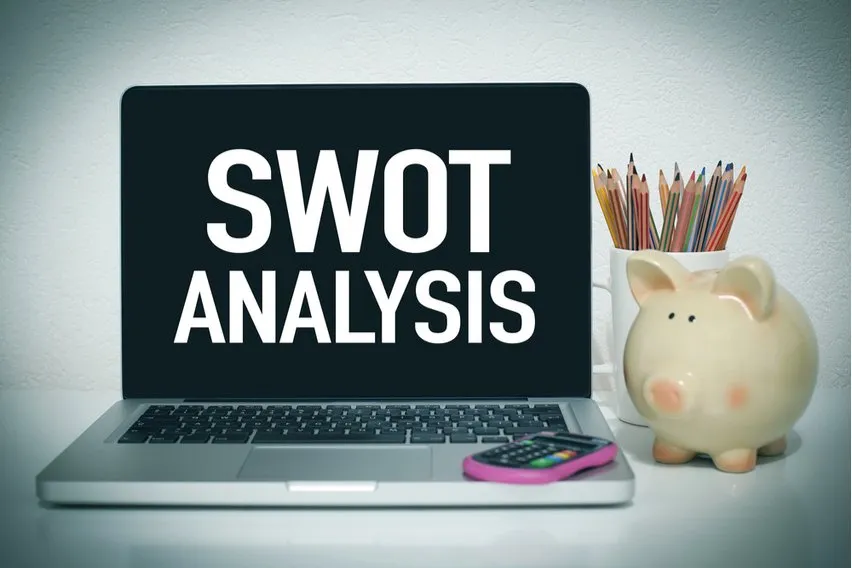Industry Analysis: Why It’s Important & How to Analyze an Industry

Conducting an industry analysis is the best way to understand your competition and any opportunities in the market.
Think about a time when you put all your energy and effort into something, only for someone else to do it better or do it first. It’s discouraging, isn’t it? You then think back through your process to identify where you went wrong.
Did you overlook some external factors? Were you not up-to-date with industry trends? The degree of competition is important to recognize when developing a competitive strategy.
It’s always easier to look back and see what went wrong. You could have missed technological factors or competitive factors. Or your business plan and competitive analysis might not have taken into account the market size.
So how do you figure out the degree of competition and use that information to set your business apart? You perform an industry analysis! Here’s everything you need to know.
Here’s What We’ll Cover:
The Importance of Analyzing an Industry in Business
What You Need for Industry Analysis
Different Methods to Perform Industry Analysis
What Is an Industry Analysis?
There’s no difference if you have been in business for decades or you’re new to the market. Performing an industry analysis is important to better understand your niche. Essentially, industry analysis is a look into your market to see how your business compares to your competition.
An industry analysis looks into every element of your business and how it lines up with others. It’s important to fully understand your strengths and weaknesses to identify any opportunities or threats. When you know your market conditions and any financial factors, you get ahead of your competition.

The Importance of Analyzing an Industry in Business
By taking a look into what makes your industry tick you get a better sense of your company’s position. Industry analysis can assess demand and supply and technological changes. It can also find external factors that influence the competition.
You’re able to better forecast your growth rate and plan for evolving industry dynamics. The result is the best possible strategy to increase your market power. If you don’t take the steps to understand how you stack up compared to your competition and gain a competitive edge, they definitely will.
What You Need for Industry Analysis
Conducting an industry analysis requires more than doing a simple search. You need to find and understand any competitive advantages, and there are a few different ways you can do it.
Some businesses hire outside firms to use mathematical forecasting for quantitative analysis. Others use qualitative analysis to come to make business decisions based on the information they gather. Whatever route you go, it will include specific market research and competitive analysis.
Here is everything you need to know to conduct your own in-depth industry analysis and get ahead of the competition!
Understand the competition:
- When you know your competitor’s products and services, you know how you can differentiate
- Are you targeting similar audiences?
- What products and services are your competition offering?
Use market research:
- Look into the demand of your market, the market size, and any economic indicators
- Where do your customers live? How saturated is the market? What do your customers usually pay for similar products and services?
Analyze the data that you have collected:
- Knowing your own strengths and weaknesses is important. But knowing the strengths and weaknesses of your competition is equally as important
- Assess what your competition offers and compare it against your own
- Are the features and benefits that you offer meeting the demands and needs of your consumer base?
Evaluate your position in the market:
- What’s your market share compared to your competitors?
- Understand if you need to adjust the price of your product or service
- Find any advantages that you have and identify possible threats in the future
- Similarly, find any weaknesses your company has and address how you can turn them into advantages
When you compile all of this information into an industry analysis, you can make better business decisions moving forward. You can identify any gaps in the market and how you can fill them. Plus, knowing what your competition is doing is the best way to know how to beat them.
Different Methods to Perform Industry Analysis
The points outlined above are an excellent starting block to understand your business and where it stands in the market. But there are some industry research and analysis models designed to take it even further.
Competitive Forces Model (Porter’s 5 Forces)
The main purpose of using this model is to formulate a strategy and understand the competitive landscape. It consists of the Five Forces of Analysis.
- Industry rivalry and the amount of competition in the market
- The threat of new products or services entering the market
- The bargaining power of buyers and how they can influence pricing
- The bargaining power of suppliers and how they can limit your profit
- The threat of new competition potentially entering the market

SWOT Analysis
The SWOT Analysis is commonly used across many different industries. It represents identifying and understanding any strengths, weaknesses, opportunities, and threats.
- Identify the strengths of your business and what currently sets up apart from the competition
- Recognize the weaknesses that may be present and where you have any disadvantages compared to your competitors
- Find the opportunities that are available in the market and how you can develop a strategy to increase profitability
- Determine any threats to your business, both internal and external. How could they affect the way you operate, your profits, or overall integrity?
Key Takeaways
It’s one thing to find information and conduct an industry analysis, but it’s another thing to understand the data you collect. Markets are constantly fluctuating and can change at the snap of a finger. It can be overwhelming!
But the power and influence that you can generate from understanding how your industry and competition work can set you apart. You will be more knowledgeable and better prepared to leverage opportunities and stop any threats in their tracks.
Find more relevant articles for your small business on our resource guide.
RELATED ARTICLES


 What Is the Ladder of Inference?
What Is the Ladder of Inference? What Is FTE? How to Calculate Full-Time Equivalent
What Is FTE? How to Calculate Full-Time Equivalent JIT: What Is Just in Time Inventory Management System?
JIT: What Is Just in Time Inventory Management System? 4 Best Barcode Generator Software in 2025
4 Best Barcode Generator Software in 2025 Time and a Half: What It Is & How to Calculate It?
Time and a Half: What It Is & How to Calculate It? 6 Email Etiquette Tips Every Professional Should Know
6 Email Etiquette Tips Every Professional Should Know